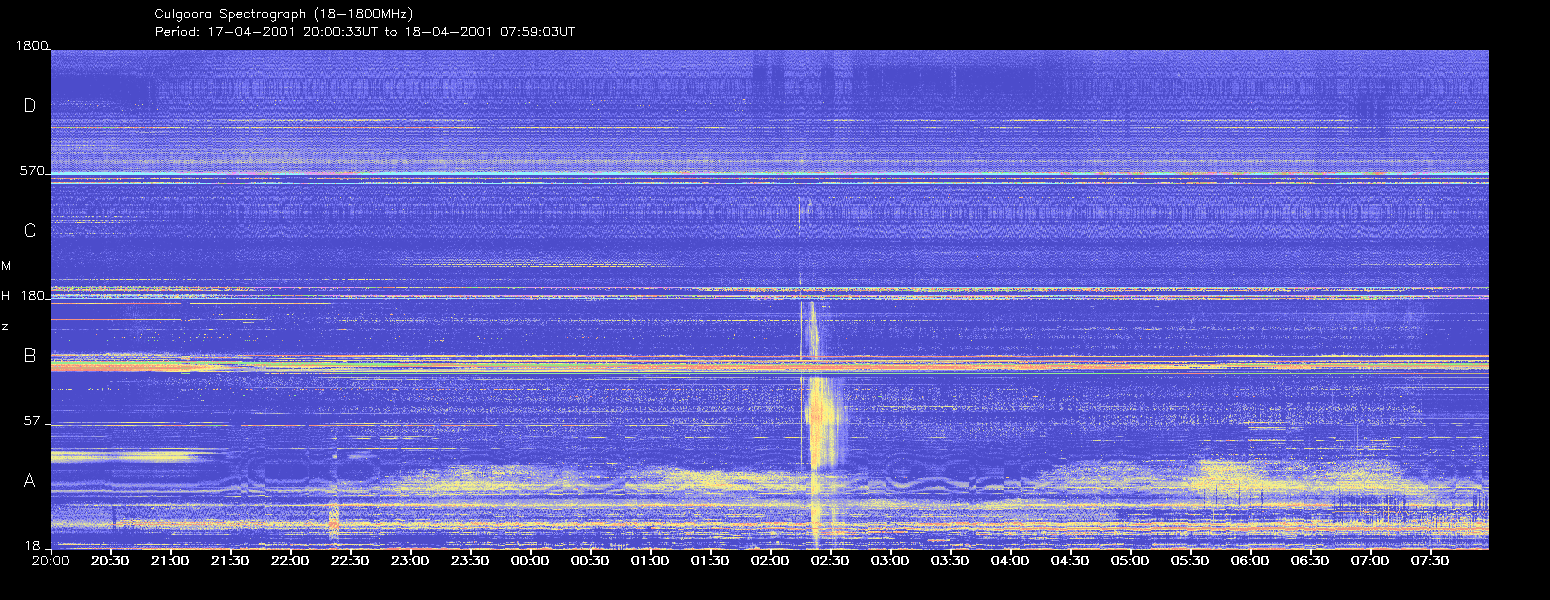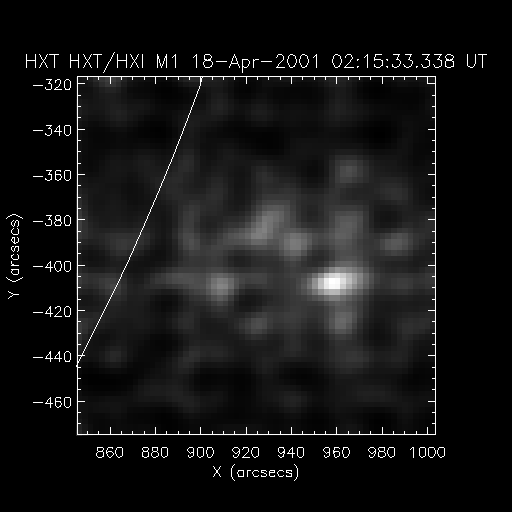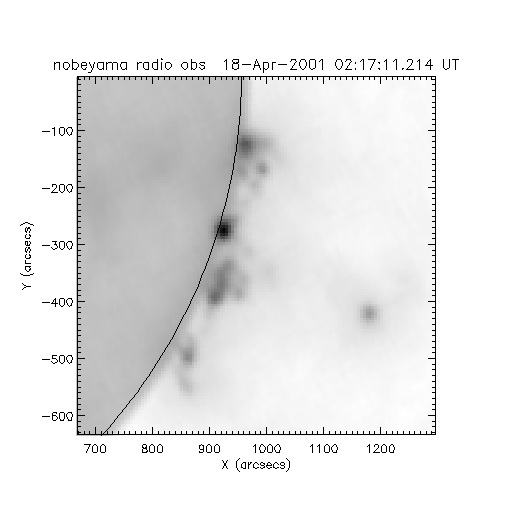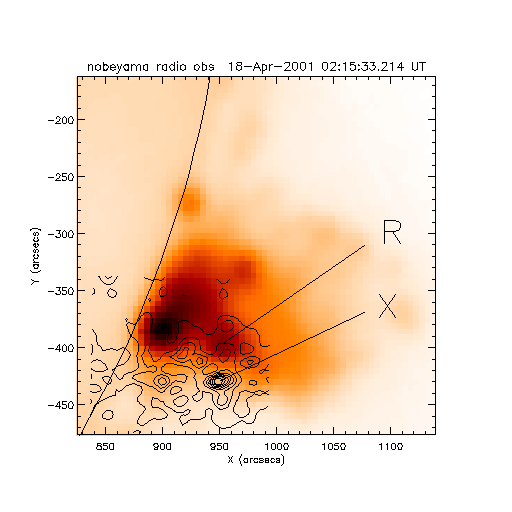
The science nugget two weeks ago dealt with what we think was a major over-the-limb flare. Yohkoh made remarkable discoveries here, and so did the Nobeyama Solar Radio Observatory. This week many other nice things happened on the Sun -- an elegant slender jet; a huge eruption off the NE limb; a rapidly-growing anemone; a sigmoid worth our first alert; a delicate and beaufiful filament eruption with microscopic transient coronal holes, etc (see the topical index or use the search capability on the main page to find nuggets on these topics). But the April 18 event has obsessively preoccupied attention. Why is this? We show some of the work in progress and comment here on why we have dropped everything to pursue it.
The main point here is that we have always longed to be able to observe the solar corona in hard X-rays, but it is very difficult. That's because the solar corona is extremely tenuous, and hard X-ray emission depends completely on having matter dense enough to stop quasi-relativistic electrons in their tracks. We know those electrons are there because of abundant radio observations, such as the one here from the April 18 event we're discussion, taken gratefully from the Web access of the Culgoora Observatory:

Click on this dynamic radio spectrum to enlarge it, then admire the "fast-drift burst" (the essentially vertical feature) starting at about 02:14:09, and the "slow drift burst" (whose slowness makes it more slanted) starting at about 02:18:38. These are both different manifestations of the presence of electrons, but the radio data have extremely limited angular resolution. Accordingly we know little quantitative about their solar origins. We often don't know what the counterparts at other wavelengths look like. So, identifying them has been a long and rewarding development in the ten years of Yohkoh observation.
Here is an image made in the Yohkoh HXT's 33-53 keV energy band, and one from the Nobeyama radio telescope at 17 GHz:

|

|
The X-ray image (left) is white on black; the radio reversed. In each one can see a bright point high above the limb of the Sun (perhaps 100,000 km on the left, and much higher on the right). Note that the times and scales are different. Both are extraordinary!
A more careful analysis shows the following unfortunate situation:

The image above compares simultaneous radio and hard X-ray observations, labeled "R" and "X" respectively. The peak shown by the X-ray contours does not coincide with the somewhat fuzzy peak seen at that time at 17 GHz (color). This means.... misalignment. In other words, we have not figured out yet how to match the images, and worse yet we can't be sure that these similar features really can be identified. That's one of the main points of the analysis of an event such as this, so that the different kinds of observation can jointly pin down an explanation (or two) for the newly discovered phenomena.
One problem we're grappling with is Canopus, an otherwise blameless star that happens to serve as the celestial reference for Yohkoh telescope pointing. This event fell right in the middle of a Canopus eclipse by the Earth. We're still trying to deal with this and with one or two other problems; in the meanwhile please enjoy the world's first views of rapidly-moving hard X-ray and microwave sources high up in the corona. We believe we have discovered yet another contributor to the complicated phenomenology of a coronal mass ejection.
You'll see future science nuggets on this subject when we get it all figured out. Movies! Theory! Simulation! Explanation! We hope all this will be presented in less of a stream-of-consciousness genre.
May 4, 2001